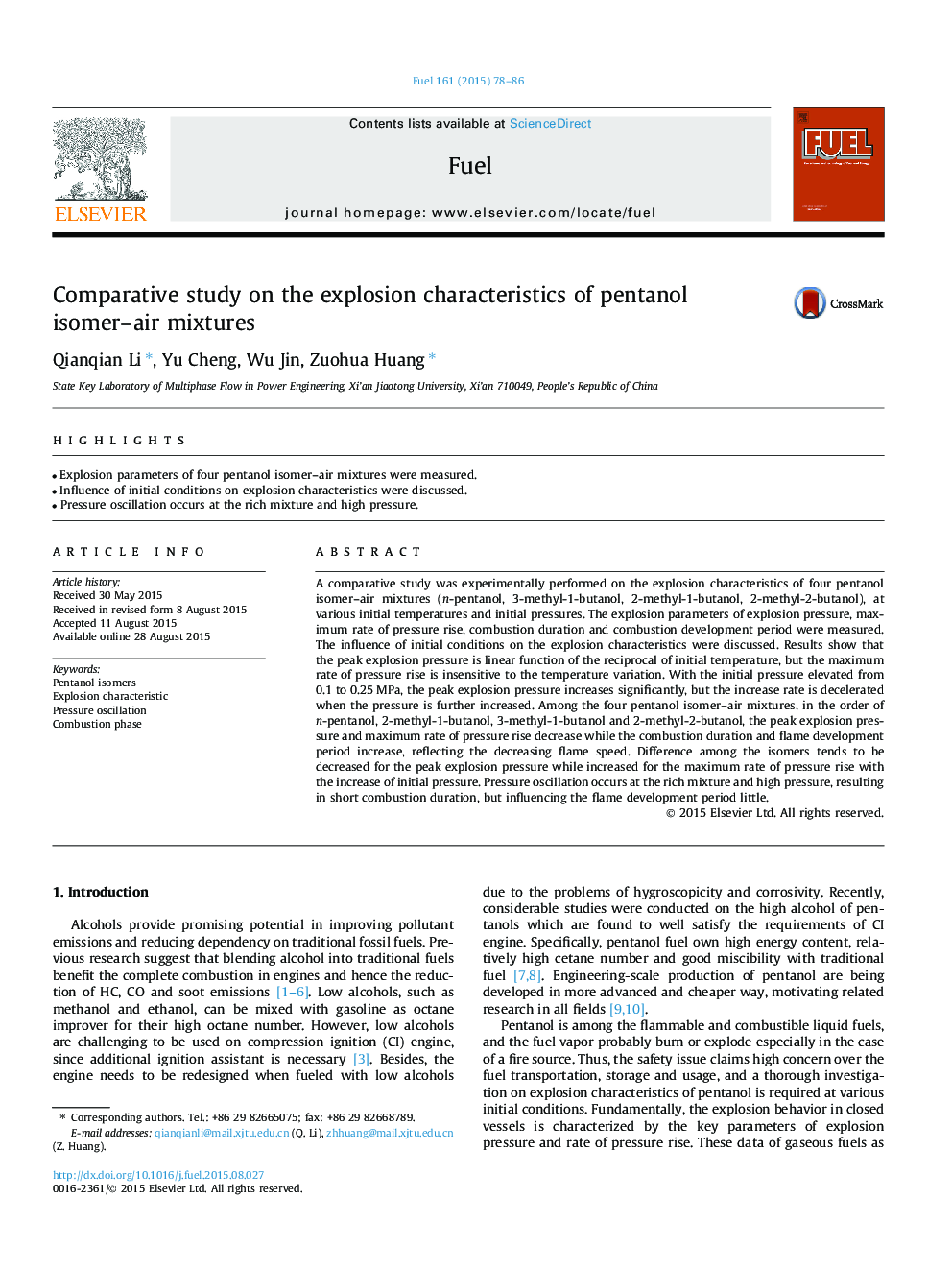| Article ID | Journal | Published Year | Pages | File Type |
|---|---|---|---|---|
| 205427 | Fuel | 2015 | 9 Pages |
•Explosion parameters of four pentanol isomer–air mixtures were measured.•Influence of initial conditions on explosion characteristics were discussed.•Pressure oscillation occurs at the rich mixture and high pressure.
A comparative study was experimentally performed on the explosion characteristics of four pentanol isomer–air mixtures (n-pentanol, 3-methyl-1-butanol, 2-methyl-1-butanol, 2-methyl-2-butanol), at various initial temperatures and initial pressures. The explosion parameters of explosion pressure, maximum rate of pressure rise, combustion duration and combustion development period were measured. The influence of initial conditions on the explosion characteristics were discussed. Results show that the peak explosion pressure is linear function of the reciprocal of initial temperature, but the maximum rate of pressure rise is insensitive to the temperature variation. With the initial pressure elevated from 0.1 to 0.25 MPa, the peak explosion pressure increases significantly, but the increase rate is decelerated when the pressure is further increased. Among the four pentanol isomer–air mixtures, in the order of n-pentanol, 2-methyl-1-butanol, 3-methyl-1-butanol and 2-methyl-2-butanol, the peak explosion pressure and maximum rate of pressure rise decrease while the combustion duration and flame development period increase, reflecting the decreasing flame speed. Difference among the isomers tends to be decreased for the peak explosion pressure while increased for the maximum rate of pressure rise with the increase of initial pressure. Pressure oscillation occurs at the rich mixture and high pressure, resulting in short combustion duration, but influencing the flame development period little.
